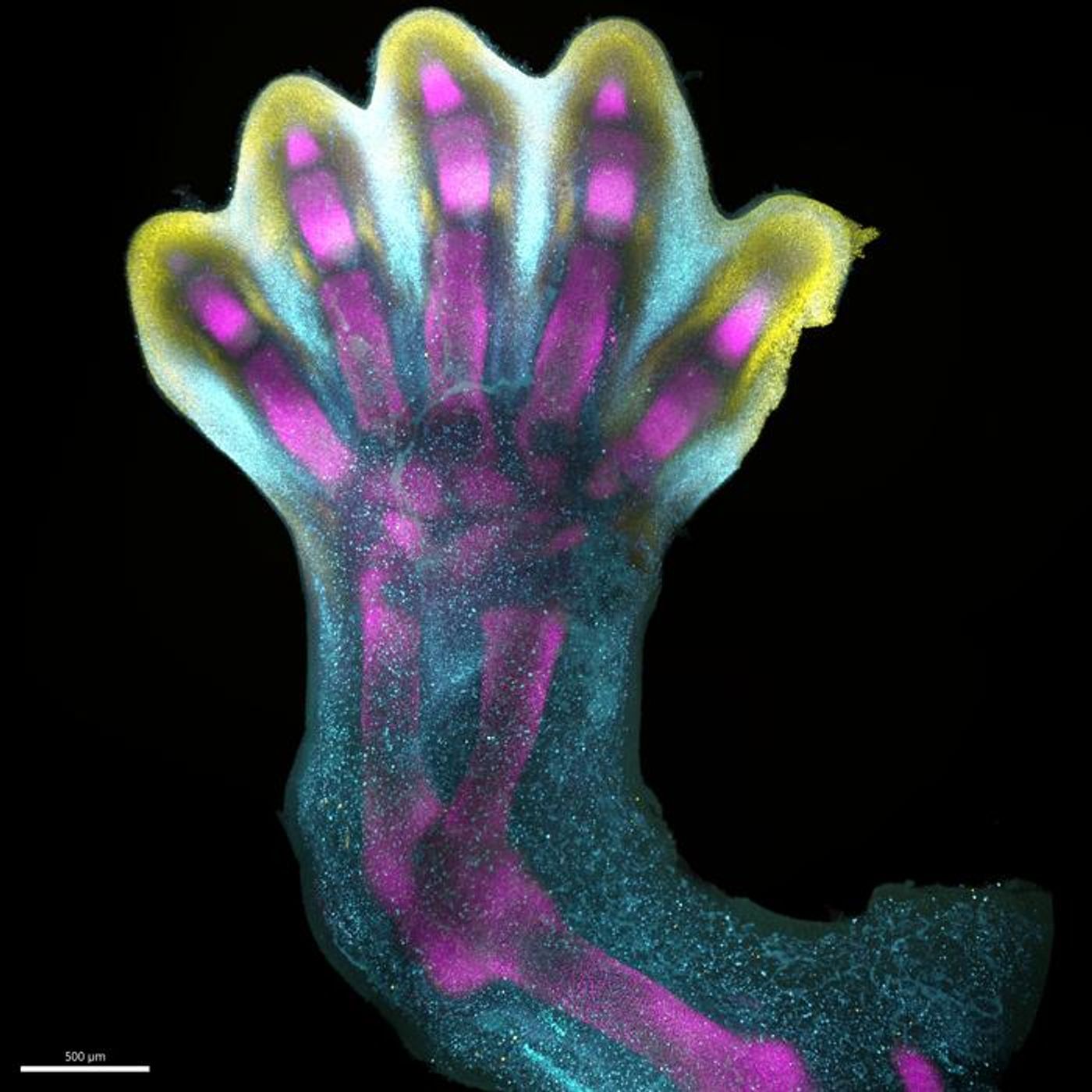A Spectacular New Look at Human Limb Development
Scientists have created a spatial atlas of the incredible process of human limb development, including steps that show digits emerging from a bud as cells recede, instead of growing outward. With single cell data and spatial tools, researchers characterized the entire array of cells that are involved, and where they are located as limbs develop. The work is part of the Human Cell Atlas, which is aiming to map every type of cell in the human body. Once complete, this knowledge could dramatically advance our understanding of human biology and disease. This portion of that effort has now been reported in Nature, and it is available in open access format.
Animal models have been used to study limb development processes, but researchers have not always known whether they were accurate reflections of what happens in developing humans. This work focused on tissues that were collected from humans between five and nine weeks of development. The researchers were able to assess gene expression in the cells of those tissues to reveal which genes were involved in limb development. With special staining techniques, the researchers were also able to see how cells were arranged as digits formed.
Limbs first emerge as pouches of cells on the sides of the body with no specific function or shape. By eight weeks of development, a dramatic reorganization has taken place; those pouches have transformed into complex forms that can recognized as limbs with fingers and toes.
If there are any problems in these biochemical events, there can be massive consequences. Limb variations, like extra fingers or toes, are among the most common birth defects and can impact as many as one in 500 births around the world.
This new data has already identified novel connections between developing cells and congenital limb defects. The study showed that specific gene expression patterns are linked to the formation of hands and feet. Crucial genes were found that cause short fingers, a condition known as brachydactyly, or extra fingers or toes, called polysyndactyly, when those genes are abnormal.
This study has also confirmed that there are significant parallels between limb development in mice and humans.
The data from the Human Cell Atlas project could have, "many implications for research and healthcare. For instance, we discovered novel roles of key genes MSC and PITX1 that may regulate muscle stem cells," noted senior study author and Human Cell Atlas co-founder Dr. Sarah Teichmann of the Wellcome Sanger Institute. "This could offer potential for treating muscle-related disorders or injuries.”
Sources: Wellcome Trust Sanger Institute, Nature









